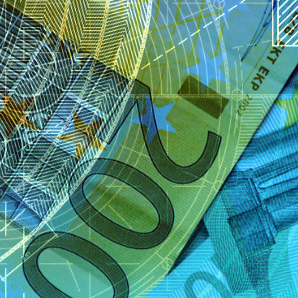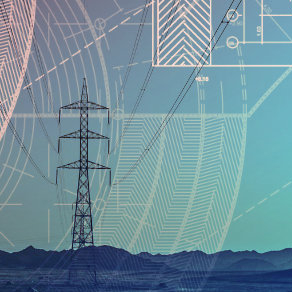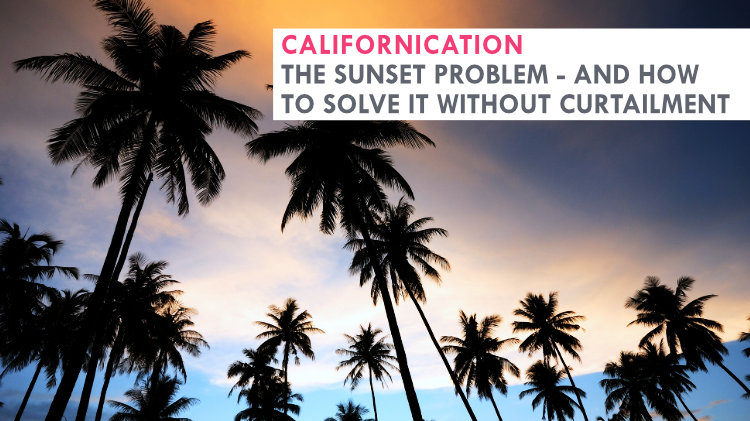
Europe may soon have a taste of California unless smart regulation is adopted and AI-supported IT systems are deployed fast enough.
The Golden State is famous for the glamor of Hollywood; Silicon Valley, which is worth more than all the gold extracted during the Gold Rush; the gorgeous golden poppy; and, of course, sunshine. But it turns out that, to flip the saying on its head, not all that is gold actually glitters.
In their 2000 hit song “Californication,” Los Angeles-based rock band Red Hot Chili Peppers (RHCP) explored the dark underbelly of their home state, but they didn’t quite have the foresight to address that, about two decades later, California would be letting massive amounts of solar energy go to waste - in their defense, renewable energy management isn’t the go-to topic for any rock band. Either way, even though millions of people all over the world may “dream of Californication,” as the chorus goes, what we in Europe must definitely not emulate is wasting precious solar energy.
Ain’t no sunshine
Before the emergence of solar power, the typical daily load curve looked something like this:
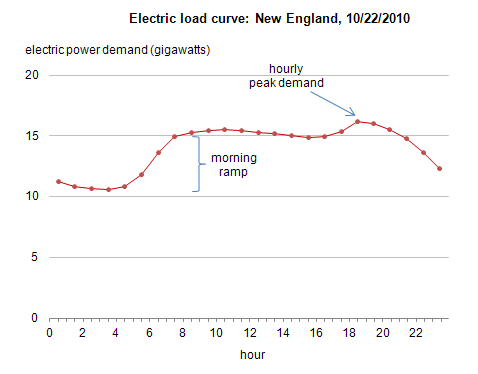
Source: Energy Vanguard
Baseload plants provided a steady supply all day, while “peaker” plants came online to deliver additional power at peak times. Bluntly put, the flatter the load curve, the happier the utility company, and if the demand was perfectly flat, all utilities would have to do was to make sure they deliver that constant amount of electricity by relying only on baseload plants. Enter renewable energy.
With solar power becoming increasingly common, that load curve is changing. During the day, solar is now providing a large portion of what baseload plants used to deliver. So the amount needed from conventional plants gets smaller, but demand still peaks in the evening, just as a huge chunk of solar supply goes away with the sun, so to speak. The gap caused by the sunset means conventional “peaker” plants must be ready to fill the void, and they must have a large capacity since the evening ramp is now much steeper than it was before the advent of solar power. Today, the load curve resembles a duck, hence the term “duck curve”.
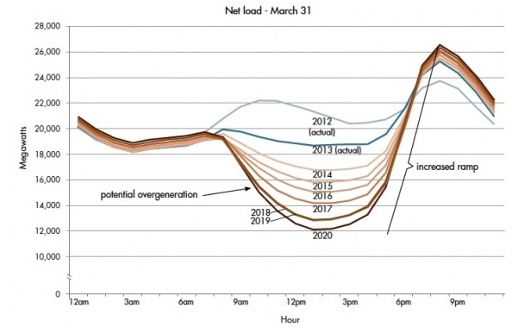
Source: CAISO
Solar power represents more and more of the energy mix - sometimes there is even too much of it.
California has built up a huge amount of solar capacity in recent years, but does not yet have enough capacity to store it for the peak demand hours when it’s needed most. As a result, the injection of solar power to the grid is sometimes limited while the sun is still shining, to enable conventional plants to get ready for production to cover the evening peak demand. On September 6, 2022, for instance, in the middle of an unprecedented heat wave, the state barely managed to avoid blackouts - state officials sent emergency messages to residents, as reported by the Washington Post - even though only a few hours earlier there had been so much solar power available that California Independent System Operator (CAISO) was rejecting hundreds of megawatts simply because it could not use it at the time. This counterintuitive measure is known as curtailment, and it’s by no means a new phenomenon.
In 2014, about 2.2 GWh of renewable energy were curtailed in the Golden State because of oversupply, which is almost negligible when compared to the amount (44,000 GWh) that the grid used that year, but with the growth of renewable energy the problem has been getting worse. Six years later, the amount curtailed by CAISO was already 1,500 GWh, or 5% of its utility-scale solar production, which is a tremendous amount to waste. With California planning to reach 50% renewable energy by 2030, this problem is likely to become worse. It’s certainly not something Europe should “import” but, as the RHCP lyric goes, “tidal waves couldn’t save the world from Californication,” and we’re seeing that curtailment is likely to become an issue on this side of the pond as well.
Here comes the sun
Solar capacity in Europe is not only growing, it’s growing at a pace that exceeds the speed of projects aimed at upgrading and expanding the grid. The yearly progress report published by SolarPower Europe shows that in 2022, 47% more solar capacity was installed in the EU than the year before. Just like in California, this growth has caused curtailment to appear in Europe too. In April 2022, for example, Spain disposed of a considerable amount of solar power after the country’s electricity demand plunged. While such occurrences are still quite rare in Europe, curtailment is on the rise - and it all has to do with sunset.
“Managing” a sunset requires huge amounts of conventional power generation capacity, and the duck curve is starting to rear its ugly head in Europe too. A transmission system operator not only has to ensure grid stability when solar-based power production switches to traditional energy sources; that supply needs to be ramped up for peak demand hours, as explained above. Physically, it is extremely challenging to ramp up production fast enough - within minutes - in order to fill the enormous demand that occurs when the sun goes down and solar power plants no longer generate electricity. And even though PV systems with co-located battery storage are part of the solution, batteries alone are not sufficient.
While the power that is generated before sundown can be stored and fed out again during the evening peak time, batteries have to be aligned with traditional large-scale power plants in order to be able to fill in when several gigawatt hours of solar production are scrapped or “disappear” simply because the sun goes down. However, it may be a long time before battery capacity grows enough to completely fill this role, if ever, but demand shifting can already make a major contribution, as can electric vehicles. Whatever the solution, it can only be effective against sunset - and, by extension, curtailment - if it is orchestrated and supported by the right software. Smart orchestration and leading-edge, AI-based IT technologies are required in order to ensure more efficient operations across the board, which in turn helps stabilize the grid and ensure a resilient energy supply.
There really is no need to waste any solar power: we can make the most of the sun’s abundant energy by making sure that we use it wisely and at the appropriate times. It’s possible by deploying more battery storage and smarter IT systems that make algorithmic decisions at mid- and low-voltage level. This could support transmission system operators in keeping the grids stable, and the result would be a future with no solar power going to waste. Or, to quote RHCP one last time: “destruction leads to a very rough road, but it also breeds creation.”

